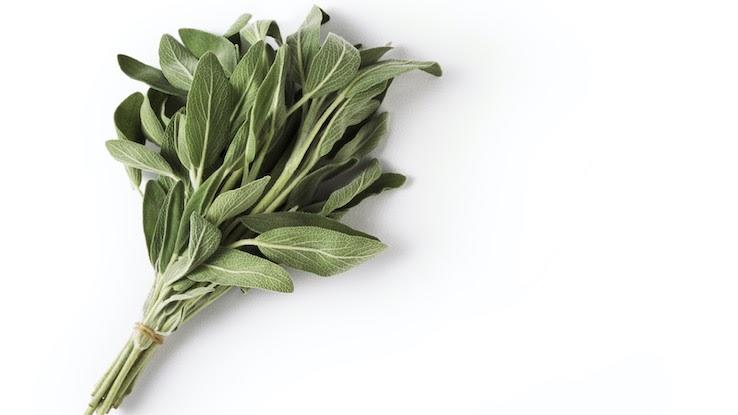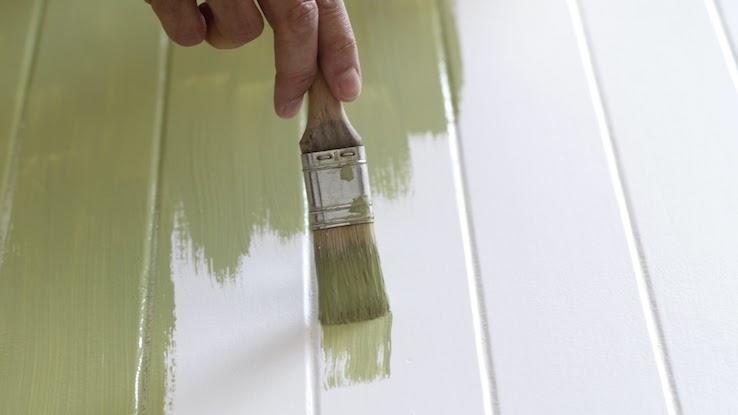What Colors Can Someone Mix to Make Sage Green Paint?

Sage green can be made by mixing the colors that are next to green on the color wheel, which are blue and yellow, in the right ratios. Sage green is a particular shade of green, and finding the right color balance may be difficult.
After creating sage green paint, it’s possible to change the hue somewhat. You can warm up the tone by adding additional yellow to it or cool it down by adding more blue. More yellow will lead to a moss-green color, and more blue will lead to a sea-green or teal color.
You can also tone down the color if it’s too vibrant for your particular use. To do this, add a complementing color. For sage green, the complementary color on the color wheel is pink or fuchsia. To intensify the color and create a more vivid look, add more of the base color. The base color in sage green is green, so you’d want to add green paint to liven up the softer sage.
What Color Is Sage?
Sage is an herb that grows in nature, and the color sage mimics the color of the plant’s leaves after they’ve dried out. It’s a subdued greenish-gray that’s considered a neutral shade, and it has a chalk-like finish. For thousands of years, people have used the herb sage for things like lowering stress and tension, calming fevers, reducing inflammation, promoting relaxation and increasing concentration. Additionally, sage has been used for its mood-enhancing effects.

Because of these age-old uses of the plant, the color sage has similar associations. People paint their walls sage to give a room a serene vibe. Sage green walls are pleasant to look at and may help people feel relaxed and in better spirits at the same time. The emotional connections humans make with colors have been studied, though color psychology remains in the early stages of research. Regardless, the only evidence a person truly needs for choosing a color for their own home is how it makes them feel. Many people see the color sage and agree that it’s a soothing color, so painting a whole room that color can help create the same sensation.
How to Make Sage Green Paint
As mentioned, blue and yellow are the colors you’ll need to use to make sage green paint. However, specific hues of blue and yellow are necessary: slate and citron. Slate is a type of stone color made by combining blue with blue-violet. Citron is a citrusy color made by mixing yellow-orange with yellow-green.

When making sage green paint, first figure out the exact hue of sage you want; it can help to find images of rooms, furniture or other items that match the color you’re going for. These can become your reference when you’re adjusting the original sage mixture you make. Begin by making the slate and citron colors separately. Then, combine those two to produce sage green.
If you find simply mixing your slate and citron doesn’t result in the exact sage you were looking for, adjust by adding either more of the pre-mixed slate and citron, or add more of the blue, blue-violet, yellow-orange or yellow-green. Only add a very small amount at a time, and mix well before deciding if you need to adjust the color any further. Adding more citron colors will make the sage brighter and livelier, while adding more of the slate color will make the sage more subdued. If you want a lighter sage, simply add very small amounts of white. If you want a darker sage, do the same but with black.
Sage Green Color Palette
One of the great things about sage green is that it can harmonize well with many different color schemes. Its versatility shows up in how popular it has become for homes. Having sage green walls, whether light green sage or dark green sage, means you have many more choices in how you’ll decorate the room with other colors.

For instance, the original colors used to make sage, those in the range of blue, blue-violet, yellow-orange and yellow-green, all exist in different sage-green color palettes. These might include lilac, mustard, olive and pear. Furthermore, the color rose and its surrounding palette also provide a great complement to sage green. Because sage is a neutral color, it’s easy to decorate with it using almost any other neutral color.
The colors most closely related to sage are seafoam green, evergreen, lime green and swamp green. These can also substitute for sage or complement it, as they also may provide a similar sense of relaxation.
Colors That Go With Sage Green
When you’re decorating your home, having some knowledge about how colors work together is helpful. Complementary colors are colors on the opposite side of the color wheel. Sage green’s complementary colors include muted red, purple, orange and blue. Using sage’s complementary colors creates a brighter, more energetic design statement in a room.

Being a neutral color itself, sage also goes well with other neutral colors, such as beige, off-white and grey. Using neutral colors all together in a room keeps the vibe calm, minimal and undramatic.
The same goes for earth tones, or subdued colors that exist in nature, such as browns and yellows. These provide great accents for sage green. Imitating nature like this inside can help create the same type of serene and soft emotions you might feel while sitting in a forest.
Decorating your home with sage walls as a backdrop might mean including a different color accent wall, carpet or rug color, curtain colors, and furniture colors. There’s a lot of flexibility, which means you can easily change things around without needing to repaint the walls to match the other elements of the room. For instance, a room with sage walls, a mustard sofa and beige curtains can provide a neutral setting with a hint of energy thanks to the dash of brighter yellow.





